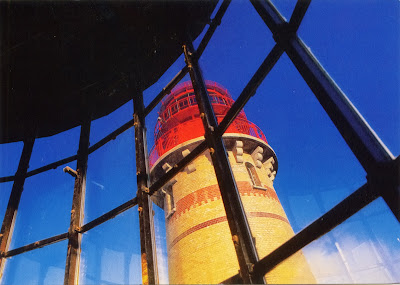 |
| Kinkaku-ji (Temple of the Golden Pavilion) |
Posted on 09.03.2012
In 794, Emperor Kanmu moved the capital from Heijō-kyō to Heian-kyō (tranquility and peace capital), located in a region far from the powerful Buddhist clergy, who began to get involved in the affairs of the Imperial government. This city will be renamed in the 11th century Kyoto (capital city), and will remain the Japan's capital for over 1,000 years (with an interruption in 1180), until the transfer of the imperial court to Tokyo in 1869. In 1945, Kyoto was on the list of targets considered by United States to be hit with atomic bombs, but in the end it was replaced by Nagasaki. The city was also largely spared from conventional bombing, and as a result it's one of the few Japanese cities that still have many historic buildings. As result, in 1994 UNESCO chose 17 locations within the city of Kyoto and its immediate vicinity to form a World Heritage Site, under the name Historic Monuments of Ancient Kyoto (Kyoto, Uji and Otsu Cities).
Kinkaku-ji (Temple of the Golden Pavilion), officially named Rokuon-ji (Deer Garden Temple), was originally a villa called Kitayama-dai, belonging to a powerful statesman, Saionji Kintsune. In 1397 the villa was purchased by the shogunAshikaga Yoshimitsu and transformed into the Kinkaku-ji complex. When Yoshimitsu died, in 1408, the building was converted into a Zen temple of the Rinzai sect (dedicated to the Buddhist Goddess of Mercy, Kannon) by his son, according to his wishes. During the Onin war (1467–1477), all of the buildings in the complex aside from the pavilion were burned down. In 1950, the pavilion was also burned down by a novice monk mentally ill. The present pavilion structure dates from 1955, when it was rebuilt. The reconstruction is said to be a copy close to the original, although some doubt such an extensive gold-leaf coating was used on the original structure.
The Golden Pavilion is a three-story building, each floor using a different architectural style: the first one, Hôsuiin (Chamber of Dharma Waters), a large room surrounded by a veranda, is rendered in shinden-zukuri style (Heian Period), the second one, Chôondô (Grotto of Wave Sounds or Tower of Sound Waves), is built in the buke style of Samurai houses, and the third one, Kukkyôchô (Superb Apex), is built in traditional Chinese chán (zen) style, with cusped windows and ornamentation. A Chinese phoenix crowns the eaves, and the top two stories of the pavilion are covered with pure gold leaf. The pavilion functions as a shariden, housing relics of the Buddha (Buddha's Ashes), and was an important model for later works, as Ginkaku-ji (Silver Pavilion Temple) and Shōkoku-ji, both also located in Kyoto.
It is set in a magnificent Japanese strolling garden, an suggestive example of Muromachi period garden design, which illustrate the harmony between heaven and earth. The building extends over a pond, called Kyōko-chi (Mirror Pond), that reflects the building, as can be seen in the picture. A small fishing deck (tsuri-dono) is attached to the rear of the pavilion building, allowing a small boat to be moored under it. The largest islet in the pond represents the Japanese islands. The four stones forming a straight line in the pond near the pavilion are intended to represent sailboats anchored at night, bound for the Isle of Eternal Life in Chinese mythology.
Posted on 30.12.2013
 |
| the pagoda of Tō-ji (East Temple) |
Tō-ji (East Temple)is a Buddhist temple of the Shingon sect, which until the 16th century had a partner, Sai-ji (West Temple), the two standing alongside the Rashomon, gate to the Heian capital. Formally known as Kyō-ō-gokoku-ji (The Temple for the Defense of the Nation by Means of the King of Doctrines), was founded in the early Heian period (796). Its pagoda, dating from the Edo period, has 54.8m height, and is the tallest wooden tower in Japan. On the 21st of each month, a famous flea market (Kōbō-san) is held on the grounds of Tō-ji. The grounds also house an academically rigorous private school, Rakunan.
Read more »















































